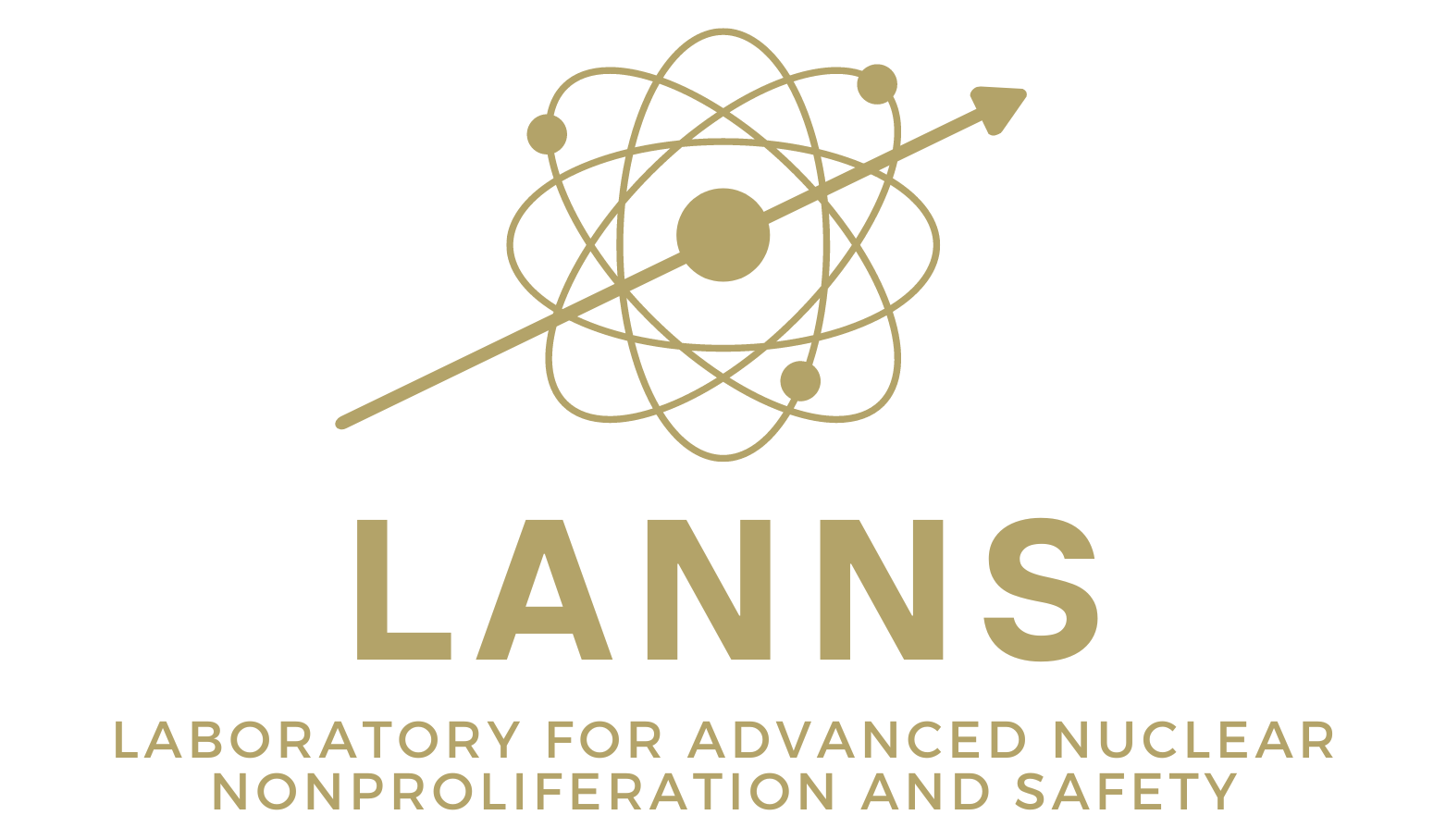 The LANNS group is currently researching the use of antineutrinos as a mechanism for safeguards. The difference in antineutrino yields and spectra from the fission products of the heavy metal isotopes results in a change of a reactor’s antineutrino flux that is burnup-dependent. If some of the fissile material were to be diverted from the core, this would slightly change the isotopic fission rates, and, depending on the reactor and the amount of material taken, the diversion may be detectable using only small, near-core (∼20 m standoff) antineutrino detectors and an independent power measurement. One major goal is to be able to confidently deploy reactors to non-nuclear states for peaceful purposes without the fear of regime change – perhaps decades after the installation – rendering weapons-grade material available covertly.
The LANNS group is currently researching the use of antineutrinos as a mechanism for safeguards. The difference in antineutrino yields and spectra from the fission products of the heavy metal isotopes results in a change of a reactor’s antineutrino flux that is burnup-dependent. If some of the fissile material were to be diverted from the core, this would slightly change the isotopic fission rates, and, depending on the reactor and the amount of material taken, the diversion may be detectable using only small, near-core (∼20 m standoff) antineutrino detectors and an independent power measurement. One major goal is to be able to confidently deploy reactors to non-nuclear states for peaceful purposes without the fear of regime change – perhaps decades after the installation – rendering weapons-grade material available covertly.
The reactor cores have been modeled using MC2-3 and REBUS-3 for region-wise neutronics and whole-core depletion, respectively. These codes are used to map the reference burnup behavior of the core over its cycle and to simulate diversion scenarios in which one or more fuel assemblies are removed. Depending on the capabilities of the diverting actor to manufacture a suitable replacement assembly and to convert the plutonium into a weapon, the replacement assembly may vary from an empty duct to a reactivity-equivalent low enriched uranium (LEU) fuel assembly; the resulting change in antineutrino flux and spectrum will thus also vary between diversion scenarios. Once the isotopic fission rates for the reference and perturbed states of the core have been generated, they are converted to energy-binned inverse beta-decay (IBD) event rates within the detector volume. These rates are time-integrated and a chi-square goodness of fit test is performed with a free parameter; if the diversion is likely to be detected (> 20%) with a low false-positive rate (5%), the method can be said to protect against low-probability diversions similar to the one performed. The free parameter in the chi-square test allows for variations in reactor power and, when minimized, represents a reactor operator acting as best as is possible via power manipulation to disguise the diversion from being discovered via antineutrino detectors. This minimization attempt causes oscillation in the antineutrino spectrum deviation, as seen in Figure 1.

Figure 1: Antineutrino spectrum oscillating deviation through reactor power manipulation.
One of the reactor concepts under study is the AFR-100 [1]; an ANL-developed small sodium-cooled core with a 30-year refueling interval. The small core correlates to a relatively small antineutrino generation rate, indicating poor detector statistics. This trend, however, will be offset by a single assembly diversion altering a large fraction of the core heavy metal inventory. The efficacy of near-field antineutrinos is assessed based on the degree of certainty which they provide that no diversion has taken place.
Through simulation and spectra sampling, machine learning methods are used to determine this probability of expected reactor inventory. High bias support vector machine (SVM) models are currently being evaluated as a supervised learning approach for diverted reactor classification. Although there is great overlap in antineutrino spectra samplings, as seen in Figure 2, SVM models are robust enough to partially isolate the diverted cases from the reference case, as seen in Figure 3.
|
Figure 2: Processed sampling of simulated AFR-100 antineutrino spectra. |
Figure 3: Normal fit of histogram from support vector machine classification value samplings. |
[1] T. K. Kim, C. Grandy and R. N. Hill. “A 100MWe Advanced Sodium-Cooled Fast Reactor
Core Concept”, PHYSOR 2012 – Advances in Reactor Physics – Linking Research, Industry, and
Education Knoxville, Tennessee, USA, April 15-20, 2012.


